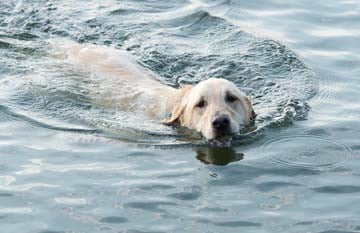Flows at low Reynolds number
Contents
Flows at low Reynolds number¶
In our discussion of wave motion we have been focusing on the inviscid limit of the fluid equations. There is much more to say about this limit, which is important for many “real-world” (“real-universe?”) applications.
To fill out our picture of the range of fluid motion, we will spend osme time considering flows with extremely low viscosity.
Generalities: “Creeping Flow”¶
Let us return to the full Navier-Stokes equations:
The last term corresponds to an externall applied force, and we shall ignore it.
Now we consider an object in this fluid with characteristic size \(R\), and the fluid velocity ar from this object having a characteristic scale \(U\). The time scale for a fluid element to cross the object is \(T = R/U\).
If we assume that
such that
then the left-hand side of the Navie-Stokes equation scales as \(U^2/R = U/T\), while the viscosity term on the right hand side scales as \(\nu U/R^2\). This latter term dominates over the left hand side if
that is, if the Reynolds number is small. In this chapter we take this to be true, and assume the pressure erm is of order the viscosity term.
By way of interpretation, note that \(U_{visc} = \nu/R\) has dimensions of velocity, and we can thus write \(Re = U/U_{visc}\). Thus, viscosity will become more important than the kinematic transport of fluid momentum when the velocity is low: thus, low-viscosity flow is sometimes called creeping flow.
